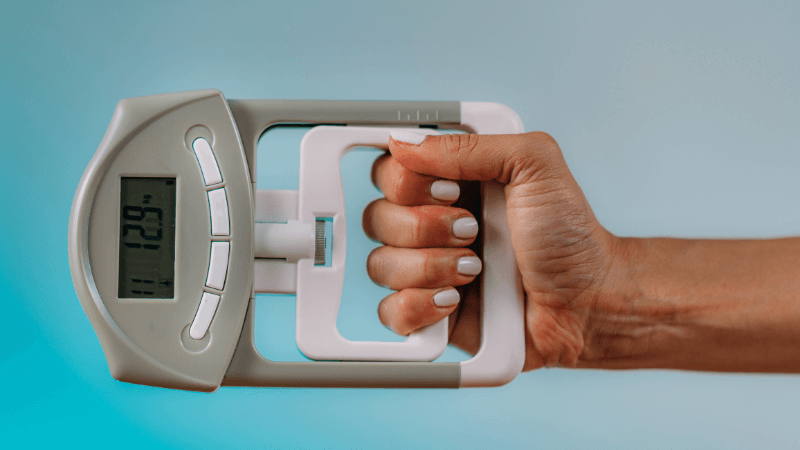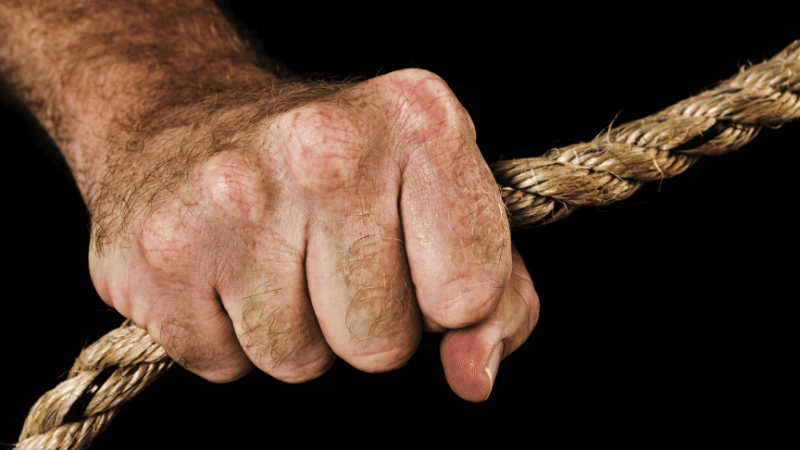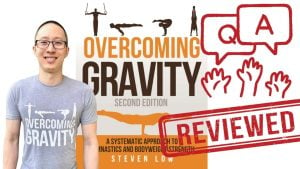Grip strength is a fascinating and surprisingly powerful indicator of overall health and longevity, much more than it might seem at first glance. As your "physiotherapist" for today, let me explain why this simple measure of physical capability is so closely linked to your long-term health and lifespan.
Grip strength is a comprehensive marker of your muscular strength. It's not just about your hand or forearm strength; it reflects the condition of your entire neuromuscular system. Stronger grip strength is often a sign of robust overall muscular health, which is linked to various positive health outcomes.
You probably have heard of researchers and physicians like Dr. Darryl Leong, who led a study published in "The Lancet," and Dr. Peter Attia, known for his focus on longevity and preventive medicine, have emphasized the importance of grip strength. For instance, Dr. Leong has stated, "Grip strength could be an easy and inexpensive test to assess an individual's risk of death and cardiovascular disease." Dr. Attia often discusses the significance of physical strength, including grip strength, in overall health and longevity on his podcast and blog, highlighting its role as a marker for aging healthily.
Grip strength is predictive of longevity and a proxy for physical health
Numerous studies have shown that grip strength is a reliable predictor of future health outcomes, including cardiovascular health, recovery from surgery, and even survival rates from chronic diseases. Lower grip strength has been associated with higher mortality rates from all causes, including heart disease and cancer. This association holds true even after adjusting for factors like age, sex, and body size.
Grip strength can also serve as a proxy for overall physical activity levels. Individuals with higher grip strength are often more physically active, which contributes to better cardiovascular health, improved metabolic rates, and lower incidences of chronic diseases. Physical activity is a well-known factor in promoting longevity, and grip strength is an easy-to-measure indicator of someone’s activity level.
As we get older, our grip strength weakens
As we age, we naturally lose muscle mass and strength, a condition known as sarcopenia. This process can start as early as our 30s and accelerates unless we take steps to counteract it through resistance training and physical activity. Strong grip strength suggests a slower rate of sarcopenia, indicating that an individual is aging more healthily and is likely more physically active.
How can we measure grip strength?
To measure your grip strength, you'll need a handgrip dynamometer. It consists of a handle that the user squeezes with maximum effort, while the device measures the force of the grip in units such as kilograms or pounds. It comes in various types, including hydraulic, pneumatic, and electronic, offering different features like adjustable grip sizes to accommodate different hand sizes.

If you don't care about numbers so much as an alternative I'd suggest using a timer for measuring how long you can hold onto the bar while doing a dead hang or a single-arm hang.
Why grip strength is essential in calisthenics
In calisthenics, grip strength is crucial for exercises such as pull-ups, where a strong grip ensures stability and endurance to complete multiple reps. In advanced moves like the human flag and front-lever, grip strength allows for maintaining a hold on the pole or bar while the body is suspended against gravity. Similarly, for muscle-ups, a firm grip is essential to transition from the pull-up to the dip phase smoothly.
Grip strength becomes the main limiting factor for progress in calisthenics because most exercises require you to support your body weight. Without sufficient grip strength, your ability to perform these exercises effectively, safely, and for longer durations is compromised, hindering progress in mastering more advanced movements and techniques essential for progressing in calisthenics training.
What muscles are necessary for a strong grip
Fingers themselves do not contain muscles that facilitate their movement. Instead, the grip itself, or the movement of the fingers is controlled by muscles located in the forearm and the palm. These muscles act on the fingers through long tendons that extend from the forearm muscles through the wrist and into the fingers.
If you want to nerd out here's a breakdown of how this system works:
Extrinsic Muscles
These muscles originate in the forearm and are primarily responsible for the gross movements of finger flexion (curling) and extension (straightening). They include:
- Flexor Digitorum Superficialis and Flexor Digitorum Profundus: These are the main flexor muscles that allow you to bend your fingers.
- Extensor Digitorum: This muscle is responsible for straightening the fingers.
The tendons from these muscles pass through the carpal tunnel (for the flexors) and the extensor compartments on the back of the wrist (for the extensors), connecting to the bones in the fingers.
Intrinsic Muscles
These muscles are located within the hand itself and are responsible for the finer movements and positioning of the fingers. They include:
- Lumbricals: These muscles work to flex the metacarpophalangeal joints (the joints at the base of the fingers) and extend the interphalangeal joints (the middle and tip joints of the fingers).
- Interossei (Palmar and Dorsal): These muscles are responsible for spreading the fingers apart (abduction) and bringing them together (adduction).
- Thenar and Hypothenar Muscles: These muscles are located at the base of the thumb and the little finger, respectively, and are responsible for the movement of these digits.
Simple exercises to improve your grip strength
To improve grip strength, focus on exercises that challenge your hand and forearm muscles through both pulling and pushing movements. Pulling exercises like pull-ups and dead hangs significantly enhance grip strength by requiring a strong, sustained grip on the bar. If you have access to a rope then regular rope climb is an excellent way not only to work on your raw pulling power but also to improve grip strength. Alternatively, try towel pull-ups by hanging it over a bar and pulling them on both ends.
Pushing exercises such as push-ups on fingertips and handstands work the grip by engaging the muscles in a stabilizing role.
Additionally, incorporating farmer's hold, where you carry heavy weights in each hand, can effectively improve both grip strength and overall muscular endurance.
If you have access to the gym, you can focus on exercises like plate pinches, where you hold two weight plates together in one hand for a time, to work on grip strength directly. Barbell and dumbbell curls not only target your biceps but also challenge your grip, especially if you vary your grip width or use thicker bars. Deadlifts, performed with a focus on gripping the bar tightly throughout the lift, can significantly improve grip strength. Lastly, farmer's walks with heavy dumbbells or kettlebells are excellent for developing both grip endurance and overall strength.




